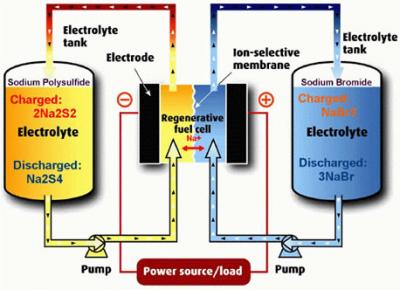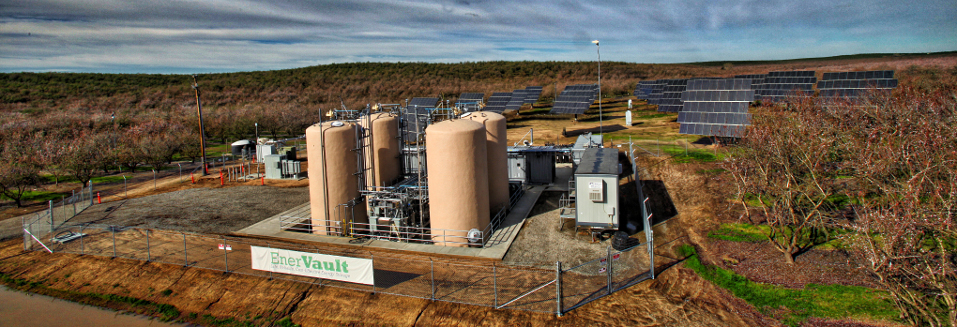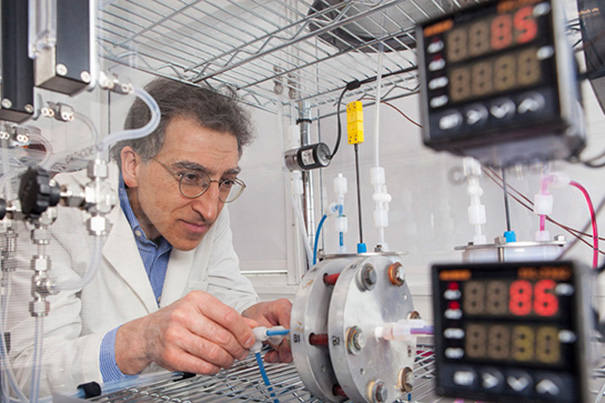Among the latest developments capturing the attention of corporate and venture capital investors are California’s 1.3-gigawatt grid energy storage mandate, potential storage mandates in New York, and further subsidies in Germany for distributed storage.
In the first half of 2014, corporate and venture investment in energy storage increased by 66%, to $178 million, versus the first half of 2013, with the majority of the investment going into battery technology startups, according to Cleantech Group.
However, one of investors’ largest concerns is that most energy storage companies don’t yet generate revenue. Concerns also persist regarding reliability and energy density of current storage systems. In fact, few energy storage commercial successes have been achieved to date; these problems were highlighted by the recent bankruptcies of battery makers Xtreme Power (later acquired by Younicos) and A123 Systems (later acquired by China’s Wanxiang.)
During a panel discussion last month, Sean Moran, a partner at Wilson Sonsini Goodrich & Rosati, and veteran cleantech dealmaker, noted that while his firm is excited by energy storage, a key concern is that companies in the space have yet to figure out “where’s the cash?”
Energy storage startups need to first demonstrate how cash will be generated throughout the storage value chain in order to get financing and tap into innovative financing models, such as securitization, yieldcos, and lease arrangements, he added.
David Kirkpatrick, director of clean tech investment bank Marathon Capital, noted that for energy storage systems, “modularity wins” in terms of attracting financing. Speaking at the Cleantech Innovation Summit, he stated that smaller storage systems can be swiftly tested in different applications deployed early to get run time and proof of concept in the market. This will help prompt “the engineers to sign off on those reports” that will improve their “bankability.”
Stating that energy storage is now the “hot thing” for cleantech VCs, Black Coral Capital’s Rob Day recently urged these investors to be more cautious about financing energy storage startups, which are looking “a lot like solar panels to me.” What excites him the most about the boom in energy storage is new downstream business model innovations that leverage onsite energy storage, he added.
Business Model Innovation Solves Storage Problems
To Day’s point, the energy storage sector is indeed experiencing a large level of innovation in terms of business models.
Examples include new project financing for no-money-down customer-sited distributed storage and new software systems for battery optimization that help to further the adoption of energy storage systems, as well as increase their reliability.
An example of this innovation is Green Charge Networks, which integrates its batteries with software to manage peak power use. The company has closed more than 2 megawatts of zero-down distributed storage finance agreements with various corporate customers, including 7-Eleven, Walgreens and UPS, as well as school campuses and municipalities in California and New York.
In July, Green Charge raised $56 million from K Road Capital to fund distributed energy storage financing packages, following a $10 million investment from Tip Capital in March.
Other smart energy storage startups that have raised project funding for customer-sited energy storage include Stem, which on Sept. 16 raised $100 million from New York’s B Asset Manager to offer its energy storage finance packages to corporate customers; and Coda Energy, which raised $6.4 million from Fortress Investment Group in March.
The industry views these developments as a big step forward for the development of affordable onsite storage, a path forged earlier by solar and efficiency retrofit providers.
Additionally, new companies are developing software to integrate storage services and optimize the performance of energy storage systems, which is increasing the reliability and predictability of energy storage.
One of these new companies is Greensmith, which raised $4 million of a $9 million round in May and is on pace to increase revenue by 400% over 2013 and exceed 23MW of installed systems in 2014. The company currently incorporates lithium ion batteries from Aquion Energy and flow batteries from startup ViZn Systems.
In June, another energy storage software system provider Growing Energy Labs Inc. (Geli) announced the commercial operation of the first grid-tied, solar-integrated EV fast-charging station optimized by energy storage located at City Hall in the City of Benicia, CA. The project had several partners, including CODA Energy and Energy Vault, and combined Geli’s software with CODA Energy’s batteries.
Growing Energy Labs raised $750,000 in seed funding in July 2013 from investors including Wilson Sonsini Goodrich & Rosati, Greenstart, and Invested Development.
Seattle-based software startup 1Energy, which raised $1.5 million in April 2013 for its grid-tied storage software systems, is currently working with Washington State’s Snohomish Public Utility District on two new projects.
And Demand Energy focuses on incorporating software technology and storage for demand charge management in buildings which has been successfully tested in the 58-story Barclays Tower in New York. The company has raised $7.5 million in Series B venture and debt financing.
Flow Batteries Riding A Storage Wave
Lockheed Martin’s acquisition last month of Sun Catalytix’s affordable “flow batteries” made from low-cost and abundant materials, along with recent projects and new fundings have spotlighted flow batteries as an area of energy storage holding great promise, particularly in off-grid applications such as microgrids.
Flow batteries received $42 million of venture capital investment in this year’s first half, about 24% of the total amount invested in the energy storage sector, according to Cleantech Group.
Sun Catalytix will be incorporated into Lockheed’s microgrid technology. In May 2013, the U.S. Army and Lockheed commissioned the first U.S. Department of Defense grid-tied microgrid at Fort Bliss, Texas. Today there are 25 military microgrid installations in the United States using technology from companies including flow battery providers ZBB Energy and Primus Power.
Navigant Research expects worldwide installations of microgrid capacity to grow from 866 MW this year to more than 4,100 MW by 2020. The research firm also estimates revenue from microgrids will reach $40 billion by 2020, from $10 billion currently.
Flow batteries generate energy through chemicals used to generate electrochemical reactions in dissolved liquids housed in separate containers that flow through a membrane. The key advantage here for microgrids is their ability to rapidly recharge these batteries by replacing the electrolyte liquid, while simultaneously recovering spent material, so they last longer than lithium ion batteries. However, they are relatively large and bulky, and the chemicals used in flow batteries to date are expensive.
Despite these current barriers to widespread commercialization, flow batteries are expected to become more economical given the rate of technological advancement over the past year coupled with commercial potential in utility-scale, distributed energy generation, and automotive applications.

Metaefficient flow battery
Recent Key Developments in Flow Batteries
ViZN Energy Systems, founded in 2009, is raising $25 million to further expand production of its low cost 80-kilowatt, 160-kilowatt-hour zinc-iron flow battery, which is used mainly in microgrids. Storage software system developer Greensmith recently incorporated ViZN’s batteries in its systems, and microgrid power provider BlueSky Energy in Austria is also using its batteries.
In July, German automotive startup NanoFlowcell’s Quant e-Sportlimousine, which uses a saltwater-based flow battery system with five times the capacity of lithium ion batteries, was approved for testing on public roadways in Germany.

Quant e-Sportlimousine
Imergy Power Systems, a key player with 50 flow batteries installed throughout India, is developing applications for commercial customers such as data centers. In July, the company announced a breakthrough in a process for producing its vanadium flow batteries from recycling waste.
In May, EnerVault, which raised $15 million in Series B funding in 2012, unveiled a utility-scale demonstration storage project on an almond farm in California’s Central Valley to test the feasibility of its lower-cost iron chromium-based redox flow batteries.

New York City’s Metropolitan Transportation Authority (MTA) sponsored a two-year demonstration of a vanadium battery energy storage system that used American Vanadium Corp’s flow batteries, the company announced in May.
Primus Power, which raised $20 million in February and is seeking an additional $15 million, last year entered into an R&D contract to deliver two 250 kilowatt energy storage systems in the Puget Sound Energy (PSE) territory with its zinc-based flow battery system. It was also awarded a contract to provide storage for a Marine Corps Air Station microgrid in California.

Primus Power Energy Pod
In February, The U.S DOE’s Renewable Energy Laboratory (NREL) began testing Gildemeister’s new commercially available CellCube vanadium flow batteries, for potential deployment with U.S. utilities this year.
In January, Harvard announced its U.S. DOE-backed breakthrough metal-free flow battery breakthrough using an abundant, cheap rhubarb-like molecule now in commercial testing. It was described by ARPA-E director Cheryl Martin as “the tip of the iceberg” for metal-free batteries.

Harvard scientist Michael Aziz
And last August, General Electric and Lawrence Berkeley National Laboratory lab announced that they were partnering on the development of a new water-based flow battery to power electric vehicles to travel around 240 miles.